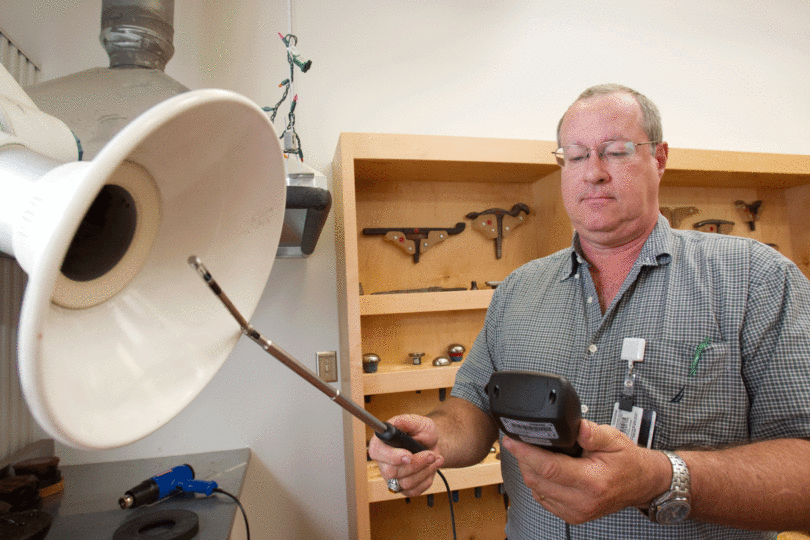John Lambeth likes to call himself “the workplace safety guy for the university” to help answer the questions of what he does. As the university’s industrial hygiene and occupational safety program manager, Lambeth is tasked with helping keep faculty, students and staff safe while at UGA.
“The Environmental Safety Division created this position to start addressing some of these workplace hazards that were being identified,” Lambeth said. “I’m looking for things that pose a risk to an individual’s well-being-respiratory issues, eye protection, noise exposure, chemical handling concerns, life safety issues or animal handling issues.”
A certified industrial hygienist and certified safety professional, Lambeth began working at UGA in November. To become certified, Lambeth had to have a certain level of education, experience and training. Lambeth holds a bachelor’s degree in chemistry and a master’s degree in environmental health from East Carolina University. He also earned a master’s degree in public health and a doctorate in public health from the University of Oklahoma.
“Dr. Lambeth brings more than 30 years of experience in the fields of industrial hygiene, occupational health and safety to the university,” said John McCollum, the associate vice president and director of the Environmental Safety Division. “We are excited that he has joined the ESD team, and I look forward to working with him in providing a safe and healthful work environment for our faculty, staff, students and visitors.”
During the time Lambeth has been at UGA, he has started surveying the more than 300 buildings on campus. As part of the assessment, Lambeth is looking for any stresses or hazards that might affect employees.
“What we’re about is trying to identify those things that put people’s health and safety at risk,” Lambeth said. “People will be a little bit more tired at the end of the day because that’s what work does to you, but we want them going home feeling pretty much how they felt when they came into work, and we want them to have a safe working environment to get their jobs done.”
Working with risks or hazards such as poor ventilation or nonergonomic workspaces can harm working-conducive behavior and employee health, Lambeth said. Using his experience and knowledge, Lambeth is able to spot ways to improve life for university employees as he performs surveys.
“We’re very big on prevention because we’d much rather identify something that has the potential of being a problem and deal with it before we’re having to put out a fire,” he said.
Part of the preventive measures Lambeth provides are ergonomic evaluations of workspaces, something any employee can request. During those evaluations, Lambeth will look at things like workspace setup, the placement of key work components, the distance someone is from a computer monitor and even the amount of glare coming from any windows.
Lambeth says with proper training, something he is planning to extend to new employees, injuries and illness should be reduced around campus, which would help the university.
“If we get down to zero, think about how much time and money we’d save as a university and community,” he said. “That can be put back into anything here on campus, and it would benefit everybody.”








